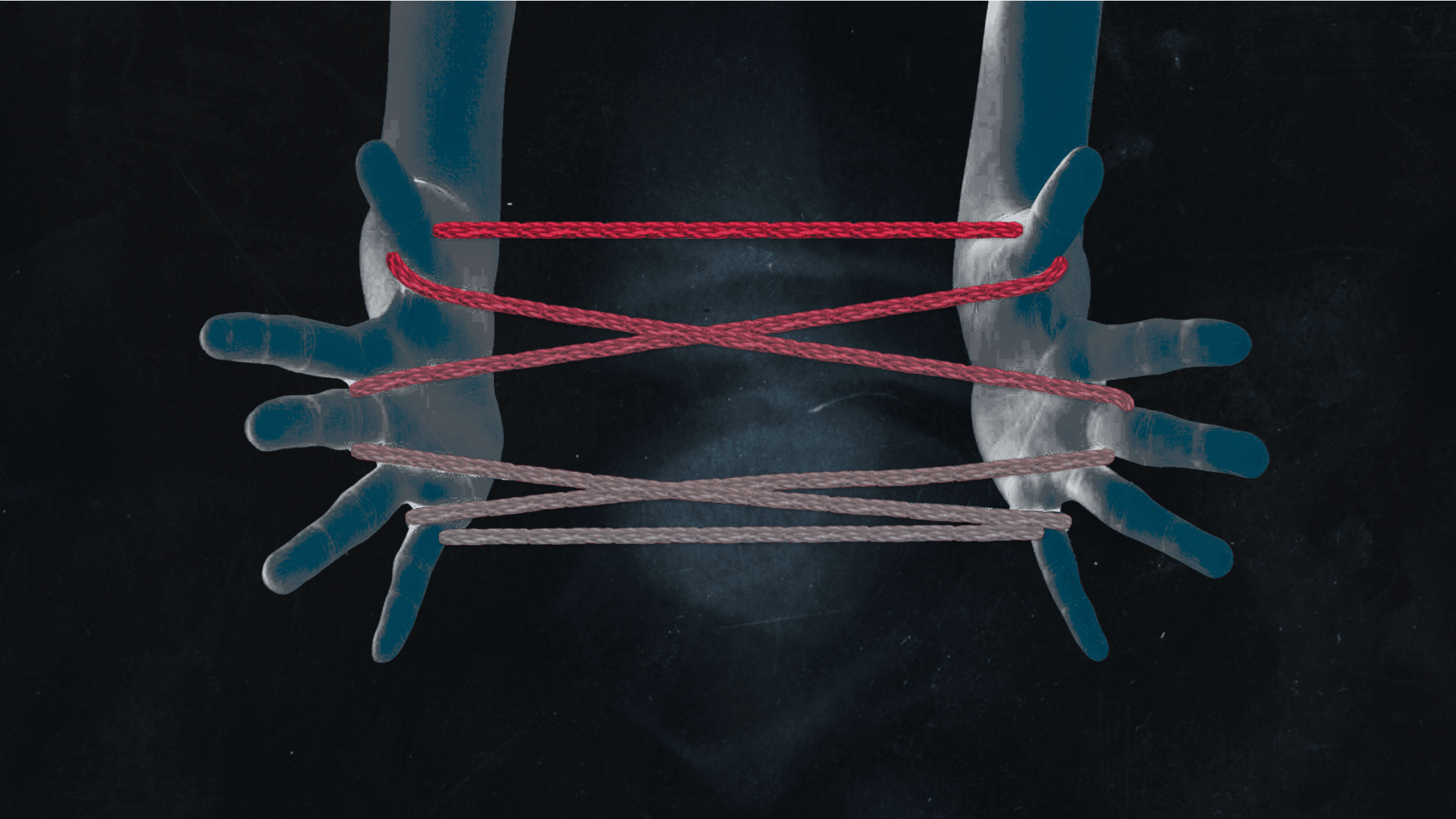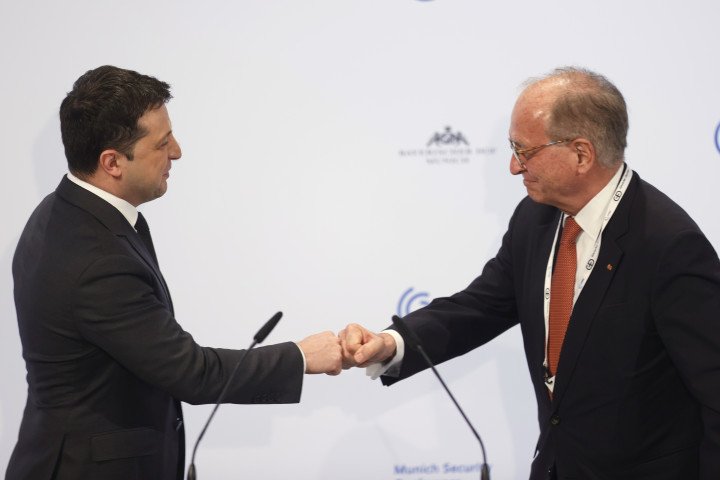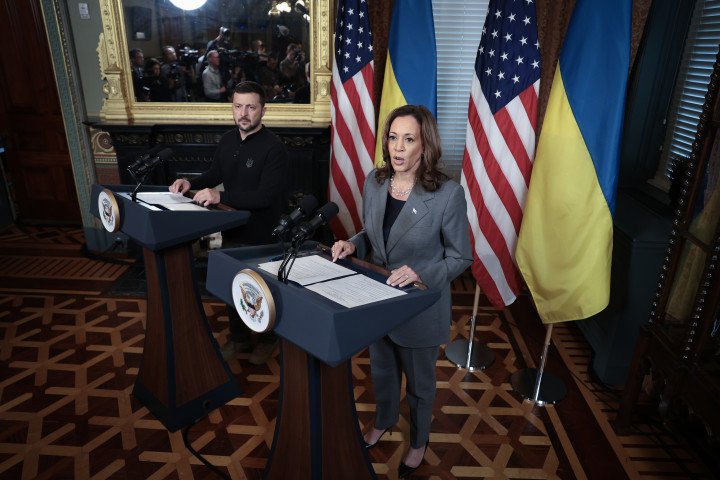- Category
- War in Ukraine
Russia’s Repeatedly Redrawn Red Lines

“Russian red lines” have been a focal point of international debate since the country’s full-scale invasion of Ukraine. Moscow has persistently threatened the West that crossing their so-called “red lines” would drag NATO into war with Russia. But is Russia’s relentless red-line rhetoric still effective?
“The most important red line has been crossed already—when the Russians entered Ukraine,” Danish Prime Minister Mette Frederiksen said on September 23. She calls on her Western allies to stop discussing the Kremlin's “red lines” and to allow Ukraine to strike inside Russia.
Russia has been able to indiscriminately attack civilian targets in Ukraine while keeping a safe haven for themselves due to restrictions imposed by the West on the use of long-range weapons on Russian soil.
“Russia keeps saying, ‘If you do this, if you cross this or that red line, we might escalate,’” said Wolfgang Ischinger, the chairman of the Munich Security Conference.
“Why don't we turn this thing around and say to them, we have lines and if you bomb one more civilian building, then you shouldn't be surprised if, say, we deliver Taurus cruise missiles or America allows Ukraine to strike military targets inside Russia?” Ischinger said.

Russia reportedly made 15 high-profile statements about “red lines” in 2023 and in 2022, the Kremlin made 24 “red line” statements to the West.
The Kremlin’s threats, however, are becoming weaker, with its empty rhetoric repeated throughout September—yet another point in a growing timeline of hollow warnings.
04.09.2024 | “They (the U.S.) should understand that our red lines are nothing to fool with. And they know very well where they are," says Russian Foreign Minister Sergey Lavrov. |
12.09.2024 | Putin threatens the West stating that by letting Ukraine use long-range missiles on Russian territory, this would put NATO, the U.S., and European countries at “war” with Russia. |
20.09.2024 | “We talk about red lines, expecting that our assessments, statements will be heard by intelligent, decision-making people. It is not serious to say that if tomorrow you do not do what I demand of you, we will press the 'red button,” says Lavrov. |
25.09.2024 | Putin draws his red line for the U.S. and their Western allies yet again, signaling a nuclear attack should long-range weapons be allowed to strike inside Russia, also stating that any nuclear power supporting any non-nuclear state (Ukraine) could trigger the nuclear response. |
27.09.2024 | “The state border is the red line. If they set foot on it, the response will be immediate...I have been saying that attacking Belarus is World War Three,” said Belarusian President Lukashenko, which Putin confirmed by making amendments to the nuclear doctrine. |
As I mentioned few days ago, the Ukrainian operation in Kursk blew away the last illusion of any seriousness of Russian red lines. They don’t exist and are pure bluffs to prevent or at least delay Western deliveries.
— (((Tendar))) (@Tendar) August 19, 2024
President Zelenskyy made that point public, too, with a clear… pic.twitter.com/SJ7WB28Aiq
Ukraine crossed Russia’s previous red line with its recent incursion of the Kursk region on Russian soil. Ukrainian forces have so far been fairly quiet due to operational security, but it's no secret that Ukrainian forces took more than 1,000 km sq of Russian land, including hundreds of Russian prisoners of war, in the largest capture of Russian soldiers.
Ukraine is also using its own weapons to strike Russian military targets on Russian territory, without provoking any escalation. Thus, devaluing his persistent threats and leaving them seem rather empty.
Even Putin himself made a joke about the shifting red lines, stating that only he really knows where they are.
„Putin himself has made joking reference to Russia’s rapidly shifting red lines, indicating that they do exist, but only he knows where they really are. “Well, as for these “red lines”, let me keep this to myself,”https://t.co/KyeHtKM9Jm
— Carlo "Realism, Gedankenfetzen and Rants" Masala (@CarloMasala1) September 24, 2024
Red-line threats continue, albeit taken far less seriously by the West. NATO Secretary General Jens Stoltenberg said on September 18 that he was doubting Putin's threats. "There have been many red lines declared by (Putin) before, and he has not escalated, meaning also involving NATO allies directly in the conflict. He has not done so, because he realizes that NATO is the strongest military alliance in the world.”
Ukraine and its allies have repeatedly crossed Putin's numerous red lines. In October 2022, Alexei Polishchuk a high-ranking Russian diplomat told Russian state media that "the so-called red lines, we have already outlined them. These are primarily the supply of long-range or more powerful weapons to Kyiv.” That line was crossed.
“Russia will set the issue of ‘red lines’ aside and will take symmetrical response measures with regard to nuclear threats,” said Russian Deputy Foreign Minister Sergey Ryabkov according to Russian state media reports on May 17.
But that didn’t last long. Just over a week later, Konstantin Gavrilov, head of Russia’s delegation to the Vienna talks on military security and arms control said: "Russia has clearly designated its ‘red lines,’ and we strongly recommend not to cross them. If an adversary decides to infringe upon them, the response may be truly devastating."
Lawrence Freedman, emeritus professor of War Studies at Kings College, London told the Washington Post that his threats have been deliberately vague. “It sounds menacing, but he never actually is very specific about what he’s going to do. He allows us to make our own interpretations, and people interpret the worst,” he said.

Ukrainian President Volodymyr Zelenskyy met with U.S. President Biden and Vice President Kamala Harris at the White House on September 26. Biden's administration promised a new $8 billion aid package in military assistance for Ukraine.
Senate Ben Cardin, chair of the Senate Foreign Relations Committee, called for Biden to change his restriction policy in a letter to the President, “the time has come to ease restrictions on Ukrainians use of U.S.-provided weapons.”
Will the red-line threats continue to deter the White House from lifting their restrictions on Ukraine’s use of long-range weapons? Or will they soon step over another one of Russia’s red lines, as they have done before, and allow Ukraine to strike military targets inside Russia? The West has everything it needs to help Ukraine slash Russian air attacks—if they allow Ukraine to strike back.
-46f6afa2f66d31ff3df8ea1a8f5524ec.jpg)
-c42261175cd1ec4a358bec039722d44f.jpg)
-6359eca46c72bde40a90abaaadd6eaa8.png)
-29a1a43aba23f9bb779a1ac8b98d2121.jpeg)


-206008aed5f329e86c52788e3e423f23.jpg)